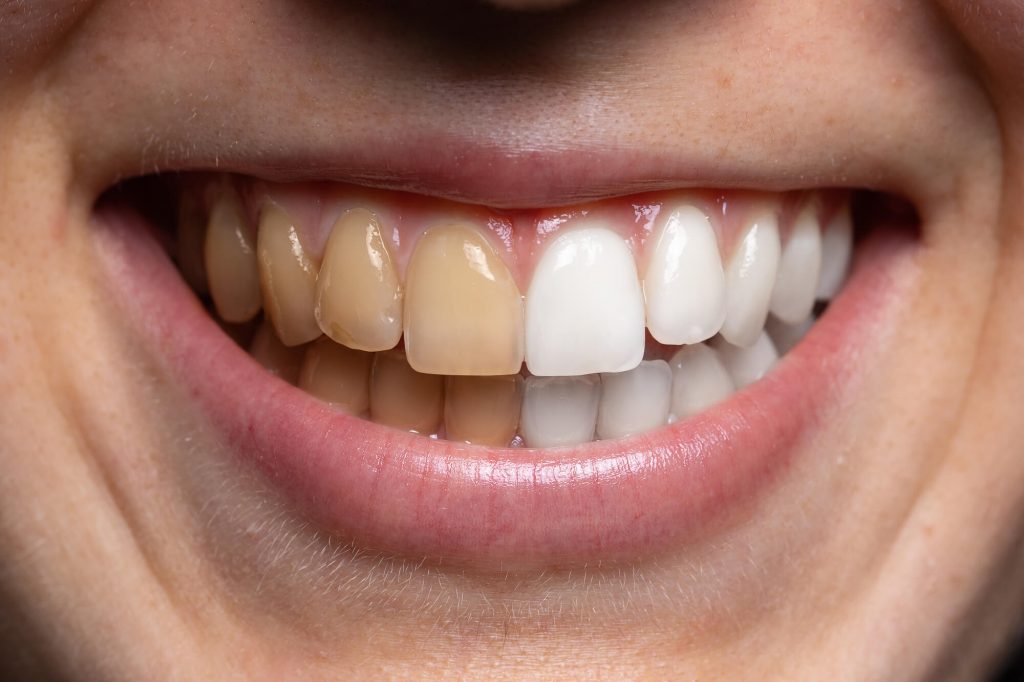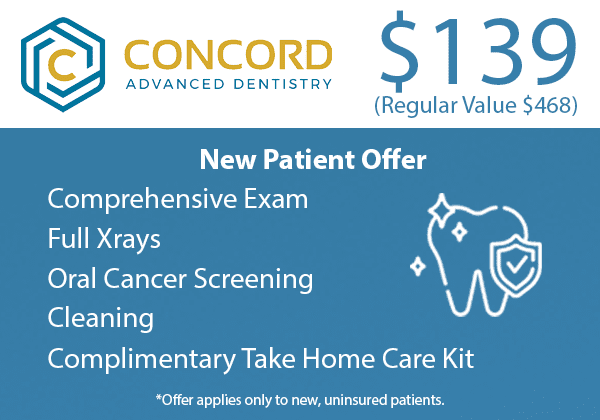According to a professional specializing in cosmetic dentistry in Concord, teeth stains and discoloration can make you look older. We understand if you’re unhappy with the shade of your teeth or if you’re suffering from stubborn stains. That’s why we’ve compiled this guide on how to remove teeth stains and restore your smile.

Tips for Getting Rid of Teeth Stains
Extrinsic Stains
Extrinsic staining happens when meals, aging, or smoking discolor the outer layer of the teeth. This process occurs on the enamel, the tooth’s outer layer that protects the dentin and pulp inside.
The good thing about this type of stain is that it’s less difficult to remove than intrinsic stains. In fact, most whitening toothpastes will help remove this discoloration. If you’re still unhappy with the color of your teeth after applying whitening solutions, schedule a professional whitening appointment with your dentist.
Furthermore, since age-related stains aren’t often cured with standard whitening, dental veneers or crowns may be the best solution for patients with age-related tooth discoloration.
Intrinsic Stains
If non-clinical whitening measures such as over-the-counter whitening toothpaste, modifying your diet, whitening rinse, etc. haven’t worked, it may be an intrinsic stain. This type occurs in the dentin of the tooth, which is located beneath the enamel.
The deeper color of the tooth’s dentin can show through thin, translucent enamel, giving the teeth a grayish or brownish color. Similarly, as a child, taking antibiotics such as doxycycline can cause the dentin of the tooth to darken even more, resulting in gray-brown areas or stripes on the teeth.
Intrinsic stains are those that occur deep within the tooth. They don’t usually respond to over-the-counter whiteners, which can be vexing for people who simply want a nice smile.
If your teeth stains are stubborn, you may need to see your dentist for in-clinic whitening treatments. Crowns, caps, and cosmetic veneers can also be used to address stubborn tooth discoloration that can’t be addressed by professional whitening.
Process of Teeth Whitening
Because dental enamel is semi-permeable, tooth whitening uses safe chemicals such as hydrogen peroxide and carbamide peroxide to penetrate the enamel and break up stains into smaller, less visible components. This is how most in-clinic and take-home teeth whitening procedures and kits work.
On the other hand, whitening toothpaste works in a slightly different way. They contain a detergent with abrasive particles to physically assist the removal of stains on the outer surface of the teeth without affecting the color of the teeth.
What Happens Once You’ve Had Your Treatment?
After the treatment, you should be able to resume your normal activities right away. The whitening chemicals may cause modest side effects such as gum irritation, mouth ulcers, or sore throat in some people, but these should go away fast.
Additionally, you should refrain from smoking and limit your intake of foods and beverages that can induce extrinsic stains. Drinking such beverages through a straw is a good idea, as is using mouthwash or brushing your teeth shortly after eating or drinking foods that are likely to discolor your teeth.
In addition to in-office whitening, you may want to consider purchasing a tooth whitening kit to help maintain the results of your beautiful smile over time.

Learn More About Cosmetic Dentistry in Concord
Concord Advanced Dentistry is pleased to provide effective professional whitening services that can restore your smile’s beauty and luster. In-clinic teeth whitening and at-home whitening products are currently available. To make an appointment or learn more about our teeth whitening procedures, call us today.


